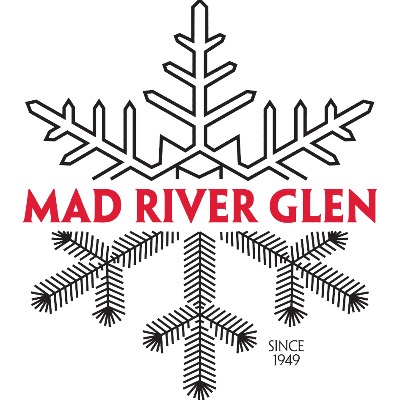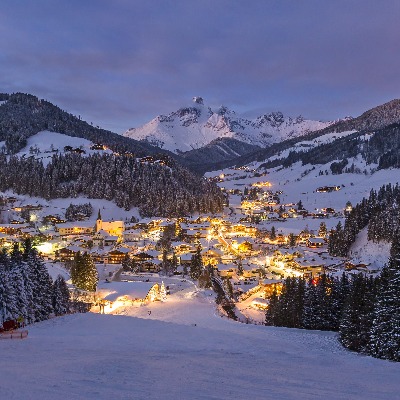Austrian Alpine Club - Glaciers: The Not So ‘Eternal Ice’ Continues To Retreat

The Alpine Club's annual glacier report provides comprehensive information on the development of the local glaciers
The current data and measurements show an average retreat of the ice giants by 11 meters in length. However, this weakening of the mean retreat compared to the previous year (15 meters) does not mean a trend reversal. The retreat of the glaciers is continuing, even if it has slowed down a bit in the current measurement period. The largest change in length was measured in the Venice Group, where the Schlatenkees (Tyrol) retreated by 54.5 meters in length.
Losses lower than last year, but ongoing retreat
The glacier budget year 2020/21 was again to the disadvantage of the ice giants in the Austrian Alps. Of 91 measured glaciers, 84 retreated (92.3%), only seven remained stationary with a change in length of less than one meter (7.7%). These figures are therefore almost identical to the values from the previous year, when 85 of 92 glaciers were advancing (92.4%) and seven were stationary (7.6%).
"The conditions for the glaciers were more favorable in the current measurement period than in previous years, since midsummer was generally at almost normal temperatures. However, even a summer temperature that is close to the 30-year average is so high that it causes the prevailing glacial retreat to continue," analyze the heads of the Alpine Club's glacier measurement service, Gerhard Lieb and Andreas Kellerer-Pirklbauer from the Institute for Geography and Spatial Research at the University of Graz.
The months of April and May, which were significantly too cool, were particularly important for the glaciers, as they delayed the strong summer melt. Thanks to this delay, the snow cover had largely but not completely melted by the end of the summer.
Drastic glacial retreat continues
However, the changes in length do not reflect the loss of mass and area or the decrease in the movement dynamics of the ice giants - as the movement measurements of the Alpine Club on the Pasterze and Hintereisferner show. The reduced retreat of most glaciers can only be explained by the protection provided by the winter snowpack, which lasts well into the summer.
This effect can also be seen in the changes in altitude measured on Austria's largest glacier, the Pasterze on the Grossglockner. Although the losses are lower than in the previous year, this does not change the ongoing retreat. During this measurement period, the Pasterze retreated by 42.7 meters in length. The Schlatenkees, which has been in decay for years, had the highest retreat value in Austria at 54.5 meters, and the Untersulzbachkees, which is also in the Venice Group, had the third highest value at 35.3 meters.
Only the low-lying, southern Alpine Eiskar glacier in the Carnic Alps once again stood out from all other glaciers in Austria. Abundant snowfall in winter and additional avalanche snow left the glacier snow-covered for the vast majority of its area, which is why the glacier was classified as stationary even without length change values being available.
“Although the current average retreat of 11 meters was the third lowest in the last 20 years, given the rest of the observations, this can hardly be considered a 'breather' for the glaciers. On the contrary, this year also fits seamlessly into the current period of drastic glacier retreat, the continuation of which cannot be doubted in the future,” according to the analysis by the heads of the measuring service Lieb and Kellerer-Pirklbauer.
Alpine Club calls for protection of high alpine regions
The Alpine Club as a nature conservation organization has been committed to protecting glaciers and the surrounding high alpine regions for years. Last but not least, valuable data is lost when the glacier melts. “There is more information about the climate of the past in glacial ice than in any book. As if the constant loss of this 'geo-archive' wasn't bad enough, we must also bear in mind the unpleasant consequences for people,” warns Ingrid Hayek, Vice President of the Austrian Alpine Club. “The rapid global melting of glaciers is a major contributor to sea level rise, including mudslides and floods. The lack of natural water reservoirs in the mountains subsequently leads to regional drought,” says Hayek.
In the service of the ice giants
In the current reporting year 2020/2021, 23 voluntary glacier knives with 42 accompanying persons were in action under the direction of Gerhard Lieb and Andreas Kellerer-Pirklbauer from the Institute for Geography and Spatial Research at the University of Graz.
Günther Groß, who celebrated his 50th anniversary as a voluntary glacier measurer last year, can also report on the challenges and high-performance alpine tasks that a measuring assignment brings with it for the glacier measuring service. He describes the changes on two of the large glaciers on the Austrian side of the Silvretta, the Vermunt and the Ochsental Glacier, since he began measuring more than 50 years ago and today as great.
“At that time, the glaciers were still powerful, bright and energetically highly charged. Their flow structure is clearly visible. The end of the glacier tongue was arched and both the apron and the end of the glacier were clearly recognizable even when there was snow cover. Today, however, glaciers are mostly slack, covered by deposits of debris and are receding remnants of what was originally an imposing phenomenon,” says Groß.
Retreat and change as a challenge
Loss of measuring marks, for example due to avalanches or debris, the search for ice that is often hidden under debris and, above all, the strong retreat of the glaciers with the formation of dead ice fields, which are no longer relevant for the measurement, are particularly difficult for the work of the glacier knife. Another problem is the unpleasant terrain in the aprons, mostly consisting of loose rubble, which makes the way to the glaciers more and more difficult and sometimes more dangerous. This assessment is also confirmed in this year's reports by the Gletschermesser, because, as in previous years, they include areas of rock becoming ice-free, division of glaciers, extensive disintegration of glacier tongues, thinning ice, formation and/or further development of concentric collapse funnels,
Glacier measurement service in figures
The Alpine Club's glacier measurement service has been observing the local glaciers for 131 years and meticulously registering their length changes. Measurements of flow velocities and surface height are also carried out on some glaciers. The area managers took a close look at 91 glaciers in twelve mountain groups across Austria – from the Dachstein to the Silvretta. The glacier reports and the photo documentation from the Alpine Club archives convey a unique picture of the development of the glaciers in the Eastern Alps and are scientifically of international relevance.














